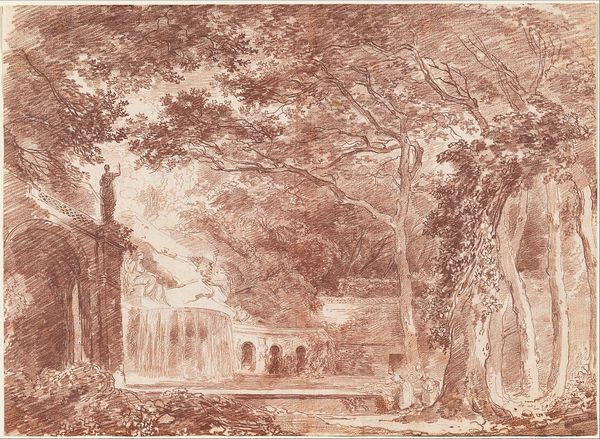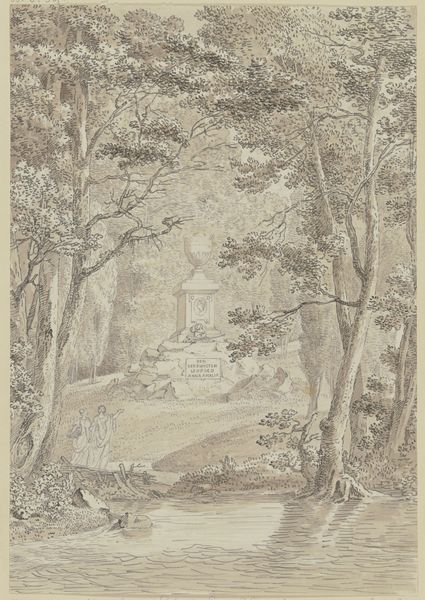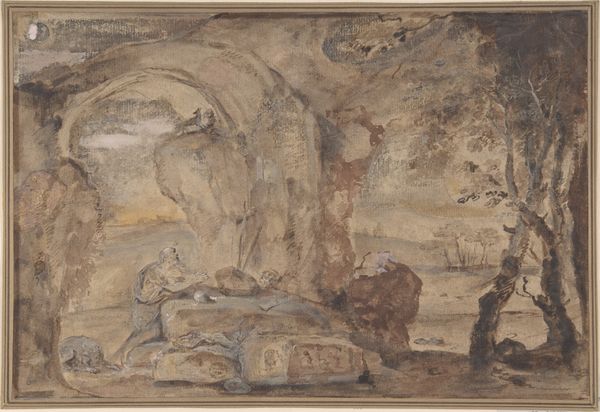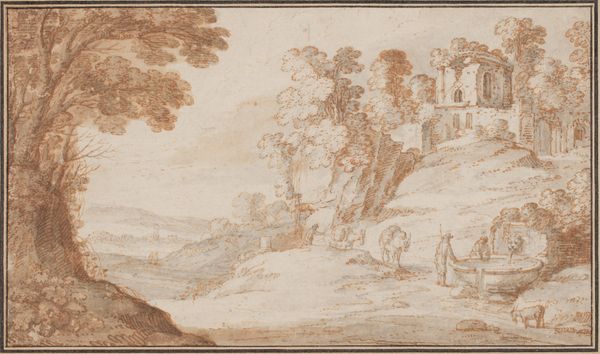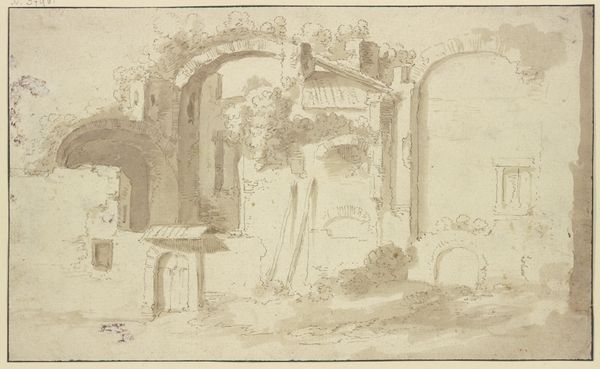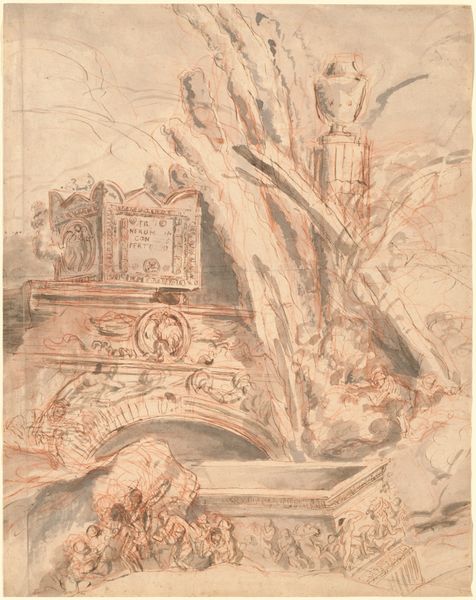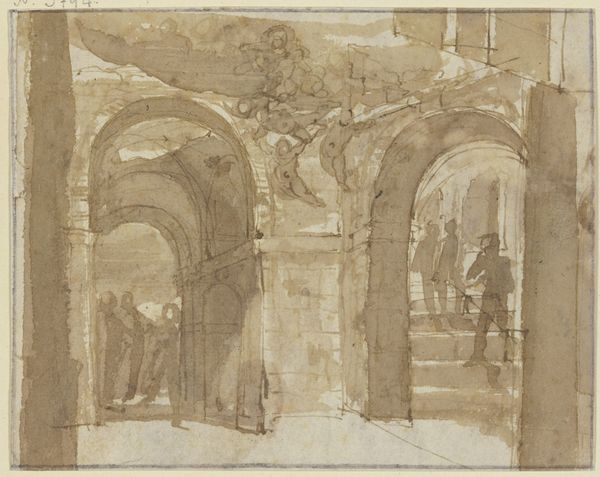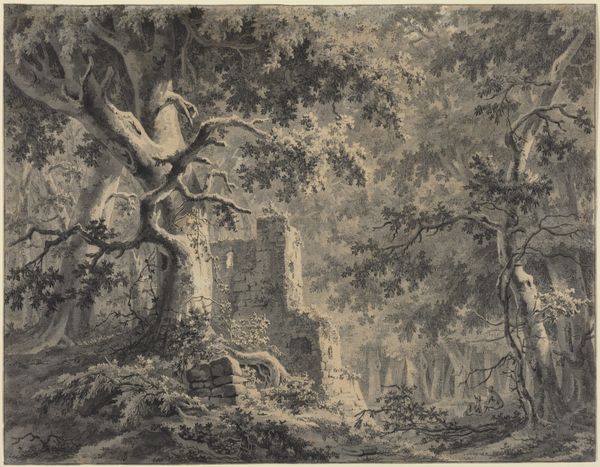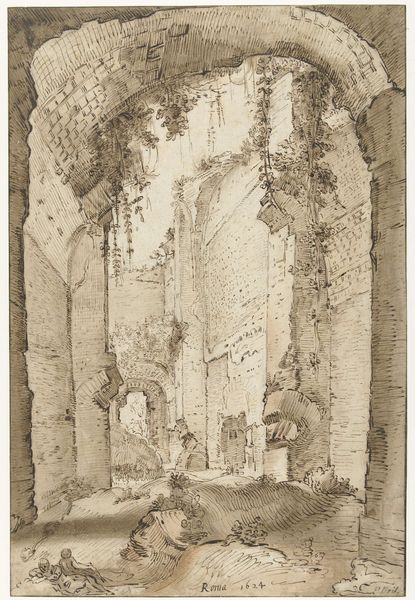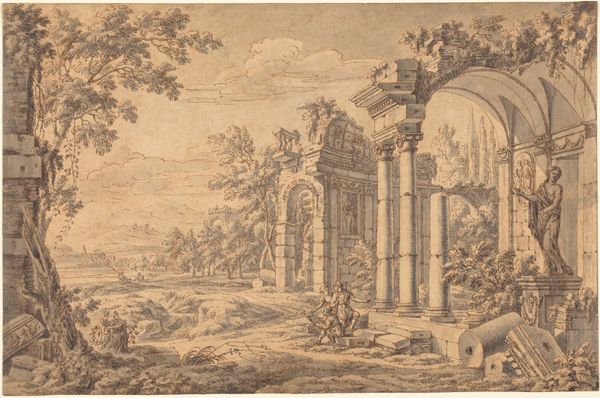
drawing, tempera, print, watercolor, pen, charcoal
#
drawing
#
medieval
#
allegory
#
tempera
# print
#
landscape
#
charcoal drawing
#
11_renaissance
#
watercolor
#
pen
#
charcoal
#
history-painting
#
watercolor
Dimensions: 8-15/16 x 13-1/2 in. (22.7 x 34.3 cm)
Copyright: Public Domain
Curator: Immediately, the overall monochrome wash gives it the feeling of an ancient dreamscape. There's something both unsettling and ethereal in its simplicity. Editor: Exactly. What you're seeing is an artwork currently titled "The Temptation of Saint Anthony," made sometime between 1600 and 1700 by an anonymous artist. It's currently held at The Metropolitan Museum of Art. Curator: Temptation is right! I sense an almost claustrophobic vulnerability in this solitary figure as shadowy things converge, as if nightmares came to life in watercolor. Is that Saint Anthony hunched over at his desk? He seems cornered not only physically within what could be an ancient landscape or ruin, but spiritually, as well. Editor: The drawing is executed in pen, charcoal, tempera, and watercolor. It depicts St. Anthony besieged by demons in the desert, a popular theme that speaks to the role of the saint overcoming earthly desires and maintaining devotion, frequently referenced within a monastic context of the period. The use of muted tones heightens the dramatic intensity and spiritual weight. Curator: I can't help but see echoes of Hieronymus Bosch here, just distilled through time and memory. Notice that one devil pointing some sort of stick or fiery dart— the artist created such tension. And what do you make of the setting; the architectural ruins blending with wild landscape? Is it literal, metaphorical, or perhaps something in between? Editor: It is definitely striking. I believe it speaks to a trend, reflecting a renewed interest during that time in early Christian asceticism coupled with art’s didactic function; moral lessons become vividly visualized. It’s also important to note how these scenes reinforce existing social norms and spiritual expectations surrounding faith and the pursuit of virtue in the public imagination of the time. Curator: This is art, where an artist manages to make what happened yesterday feel eternally relevant to today. You leave wondering: What temptations do *I* need to overcome? Editor: Absolutely, and considering it remains attributed to an unknown artist makes us wonder further about the circulation of such powerful imagery and its possible socio-political ramifications during that period.
Comments
No comments
Be the first to comment and join the conversation on the ultimate creative platform.
